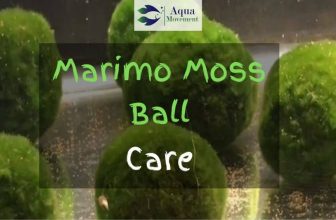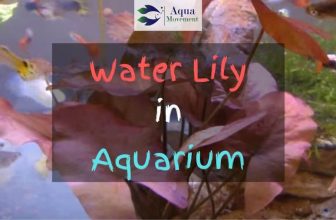Are you getting started with fishkeeping?
Are you getting your own aquarium and want to know how to make it look amazing?
Aquascaping may seem intimidating from the outside but it doesn’t need to be a scary task. In fact, aquascaping can be enjoyable, rewarding and most of all, fun!
Aquascaping takes quite a few steps but in this article, I’m going to break it down into a step by step guide and make it easy for everyone.
It doesn’t matter whether you’re a beginner to fishkeeping or a veteran fishkeeper, this guide will be helpful for everyone wondering how to aquascape.
Table of Contents
How To Aquascape: The Basics
Before we start, I want to give one piece of advice. When you’re placing anything into the tank make sure you are placing it GENTLY into the tank. You don’t want to be dropping 10kg rocks in a glass tank!
You need to be gentle and delicate with everything you put into the tank or else your new expensive fish tank might shatter in front of your eyes.
Let’s run through the basics. How can you quickly aquascape a simple yet beautiful aquarium?
I will run you down all the steps you need to take in order to get a beautiful looking fish tank.
Again, these are just the basics. After I will give more advanced advice for those wanting to take aquascaping to the next level.
Place your Rocks
Start with your tank. You’ll have a wide-open fish tank with nothing in it, just four glass walls and a glass floor. Every tank will be a different size and every tank will require a different amount of materials for aquascaping.
First, place your rocks into the tank. Again, be extremely gentle with the rocks as they could easily shatter your glass tank if you’re not careful. This will all depend on the size of your tank but you should try to cover at least three-quarters of the floor of the tank with big rocks.
Pour the gravel
After adding the rocks you will want to pour in some inert quartz gravel. This should cover the bottom of the tank, after pouring be sure to move it around until it evenly coats the bottom of the tank.
Try not to make it all the same height in the tank, but make sure it’s at least one inch across the bottom of the tank. Once you’ve added the inert quartz gravel, add a few more small rocks around the tank into the gravel.
Pour the soil
Next is the soil. You’ll be dumping the soil behind the rocks to give a backdrop to the aquascape.
Again, this will depend on the size of your tank but it will most likely take at least a couple of bags. Pour the soil directly from the bag around the back of the rocks.
Add Driftwood
After pouring the soil you can add some driftwood to your aquascape. There are certain kinds of driftwood you can get with moss already attached.
Although it is not mandatory for you to get this kind of driftwood, it will make your aquascape look even cooler.
Push the driftwood into the soil until it stands on its own. Add a couple more pieces of driftwood around the enclosure.
Pour some more soil into the back of the enclosure. Be sure to pour some over some of the driftwood. Spray down the soil to make planting easier in the next step.
Plant the plants
The next step is planting the plants into the soil. In the last step, you should have sprayed down the soil and gotten it nice and moist for planting.
Some good plants I recommend are Java moss, Murdannia kisak, Anubias petite, Bolbitis and Rotala green.
You will need a pair of tweezers to delicately put each plant into the soil. This step may take you quite a while, don’t rush it. You’ll have a lot of plants to insert and you’ll have to take your time.
Place most of the plants into the soil behind the rocks and driftwood but be sure to plant some in front to add some variety.
Be sure to use a variety of bigger and smaller plants placed everywhere around the tank, be generous with your planting.
Fill your tank with water
Once you’ve added all the plants, take a hose and put it into the tank. Slowly fill your tank up with water. Be sure to do it slowly, if you fill up your tank too fast you’ll pull the plants out from the soil.
This is a very delicate process, it will take you a while to fill up your whole tank with water. Once your tank has slowly filled to the top, you can pull your hose out.
Add equipment
Add the filter into your tank. Every tank will require a different filter and different pipes. This filter will ensure that clear running water is always going through the tank.
For lighting your tank, I recommend using a Finnex Planted Plus LED Aquarium Light. This will light up your tank beautifully.
Those are the basics! Follow those simple instructions and you’ll end up with a simple yet beautiful aquascape. I know that some of you are going to wonder how to aquascape to the next level so here are some extra tips to keep in mind.
Extra Tips
Video: “How to make under water waterfall | Double waterfalls”
Don’t get frustrated. Aquascaping takes a lot of time, more time than you would have thought beforehand.
Just remember to live in the second, you’ll look back at your time aquascaping fondly. It will be frustrating at times and seem like it will take forever but you will eventually succeed in getting your tank just the way you want.
Symmetry
Be sure to be aware of simple design principles. One of these is symmetry. Try to avoid using too much symmetry. Using too much symmetry will make your tank look lame and boring.
An example of this is only using one plant. Could you imagine filling an entire fish tank with only one type of plant?
It would be extremely boring to look at! Your tank needs to be exciting to look at and give your eyes a spectacle to gaze upon.
The rule of thirds
When aquascaping, be sure to use the rule of thirds. Don’t just dump everything into the middle of the tank, try to use the golden ratio.
Rule of thirds divides a space into nine sections: 3×3. Try to place the most interesting features into the places where the lines intersect, this will create some interesting and truly eye-catching pieces of art.
The Mountain Style design
Create a mountain styled design. Don’t have everything be evenly placed around the tank in every inch, have some variety.
I recommend stacking up the soil higher on one side of the tank to give the look of a mountain. You can plant plants into the soil and have a spectacle for the eyes.
Don’t overfill
You also need to be sure to not overfill your tank with plants, driftwood, and rocks.
Of course you want your tank to look beautiful but you need to remember that the tank is for the fish. Leave lots of open spaces for fish to swim around in. Be sure to leave them lots of nooks and cranny’s for them to explore.
Variety
When it comes to plants, use a large variety. Use plants with different colors and also use plants with different sizes of leaves.
Have some plants with big leaves mixed in with plants with smaller leaves. Variety is the name of the game, keep it interesting!
Be sure to utilize color in the tank. Use different shades of green as using just one shade of green would become awfully boring.
If you are going to utilize different colors, be sure not to just plant a single plant of a different color as this would pull the attention away from the rest of the tank you worked so hard to create. A single red plant in the middle of an ocean of green would be quite the eyesore!
Be your own guide
If there’s one thing I could leave you with it’s this: You are only limited by your own imagination. No guide will give you everything you need, you will need to find most of the guidance from yourself.
A strong passion for aquascaping can’t be found in any guide, it first and foremost has to come from you. If you have a vision in mind for how to aquascape, go after it. I’ve given you the first tools you need to succeed but the tools mean nothing if you don’t do anything with them.
Best fish for aquascaping
The best fish to choose are fish that school together. This will create incredible looking images when you look at your tank.
If you get smaller fish, they will make your tank look bigger than it really is and you’ll be able to fill your tank with a lot more of them!
Good examples of fish are:
Australian Rainbow Fish
Threadfin’s
Praecox
and other dwarf varieties of fish. Be sure to find fish that breed regularly and have active swimming habits. The last thing you want is a tank full of fish that never seem to be excited to swim!
You can choose whatever color of fish you want but a mixture of color is the most interesting and most pleasing to the eye.
Different styles of aquascapes
The Jungle Style:
Easily the simplest aquascape to reproduce when asking how to aquascape. When you’re finished designing it should look like an untamed, ferocious and unguided jungle of plants.
It should be characteristic of a garden left to its own devices for decades. It may not be the most complex but it offers a truly great environment for fish to utilize and for humans to view.
The Dutch Style:
The Dutch style does not use any wood or rocks. The Dutch style is characteristic of colors, arrangement, height, and texture.
This is a very complex style and is not recommended for most beginners.
The Iwagumi Style:
While the Dutch style focuses on the use of plants and stays away from rocks and wood, the Iwagumi style embraces rocks and driftwood. There aren’t the huge arrangements of plants like the Dutch style and there isn’t the massive overgrowth of plants like the Jungle style.
The Iwagumi style is much more tame and zen compared to the two former styles. This style usually uses three stones. A large one called the big Buddha and two smaller attending stones in order to create a sense of harmony and unity across the tank. It’s important that the stones have the same textures and colors.
Conclusion
That’s the complete guide to aquascaping your first aquarium. I’ve given you all the tools you need, now it is up to you. Are you going to create a massive overgrowth of forestry and fill it with varieties of fishes, or will you tone it down and find a big Buddha rock? The choice is really yours now.
You’re ready for the world of aquascaping. I’ve given you my recommendations for aquariums, soils, and stones. I’ve given you three distinct styles. I’ve given you the best fish to use. It’s up to you to take those tools and do something special.
Have I left anything out?
Are there any aquascapes you’ve seen that grabbed your attention?
What are the fish you recommend for an aquarium?
Leave a comment with your thoughts on aquascaping and I’ll be sure to get back to you. Once you’ve finished your own aquascape, be sure to send a picture: I’d love to see the aquascapes you’ve done.
That is my full guide to aquascaping. Thank you very much for reading this guide on how to aquascape.
Hello, I’m Aaron Boyd, the proud owner and author behind Aqua Movement. I hope my article was able to answer your questions. If you want to learn more about me, click the home icon above.




